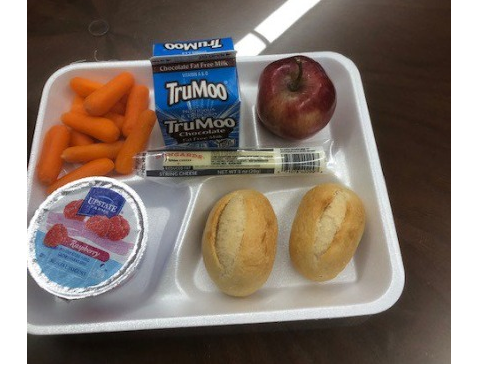Community
Fall River School Committee to vote on new program for free school lunches for all students

With a packed agenda scheduled for the Fall River School Committee on June 10th, one of the items on the docket will be a vote and discussion on a program that could bring free lunches to all Fall River Public School students.
The program, called the Community Eligibility Provision (CEP), is a provision that allows high need schools to serve free meals to all students.
According to information from the Massachusetts Department of Elementary & Secondary Education, a section of the Hunger-Free Kids Act of 2010 and an amended section of the Richard B. Russell National School Lunch Act provides an alternative that eliminates the need for household applications for free and reduced-price meals in high-poverty schools.
To be eligible, a minimum level of “identified students” for free meals in the year prior to implementing Community Eligibility must be met. It must also be agreed upon to serve free breakfasts and lunches to all students; and agree to cover with non-Federal funds any costs of providing free meals to students above the amounts provided by Federal assistance.
According to Superintendent Matthew Malone, Fall River became eligible this year and the program would begin next year. Fall River qualifies because the city has 65.93% of students that are eligible for free or reduced-price lunch.
The USDA states that with schools and districts under CEP, information from other need-based programs (such as SNAP or TANF) is used to determine the level of funding schools receive for meals programs, and schools are only responsible for covering any difference between that funding and the total program costs. According to the USDA, providing no-cost meals to all students under the provision could be thought of as a financial drain, but some school administrators across the country point out that CEP reduced the meal programs’ administrative costs and reduced overhead costs.
The MDESE feels the program gives high-poverty schools the following advantages:
1. Community eligibility will increase the participation of children in the school meal programs.
2. Community eligibility will reduce administrative costs related to collecting and processing applications and tracking students based on their meal eligibility status. As a result of expanded student participation and reductions in administrative work, there will be stronger school nutrition programs overall.
3. Community eligibility will afford schools the ability to no longer collect payments or use swipe cards or other systems during the meal service.
4. Community eligibility requires schools to serve universal free school breakfast, and it is a great way to facilitate the adoption of innovative breakfast models, such as Breakfast in the Classroom.
5. Community eligibility will also help students because families no longer have to complete meal applications and it can reduce stigma because all students are eating meals at no charge, regardless of their income status. And, studies show that well-nourished children are able to focus in class and ultimately do better in school.





You must be logged in to post a comment Login